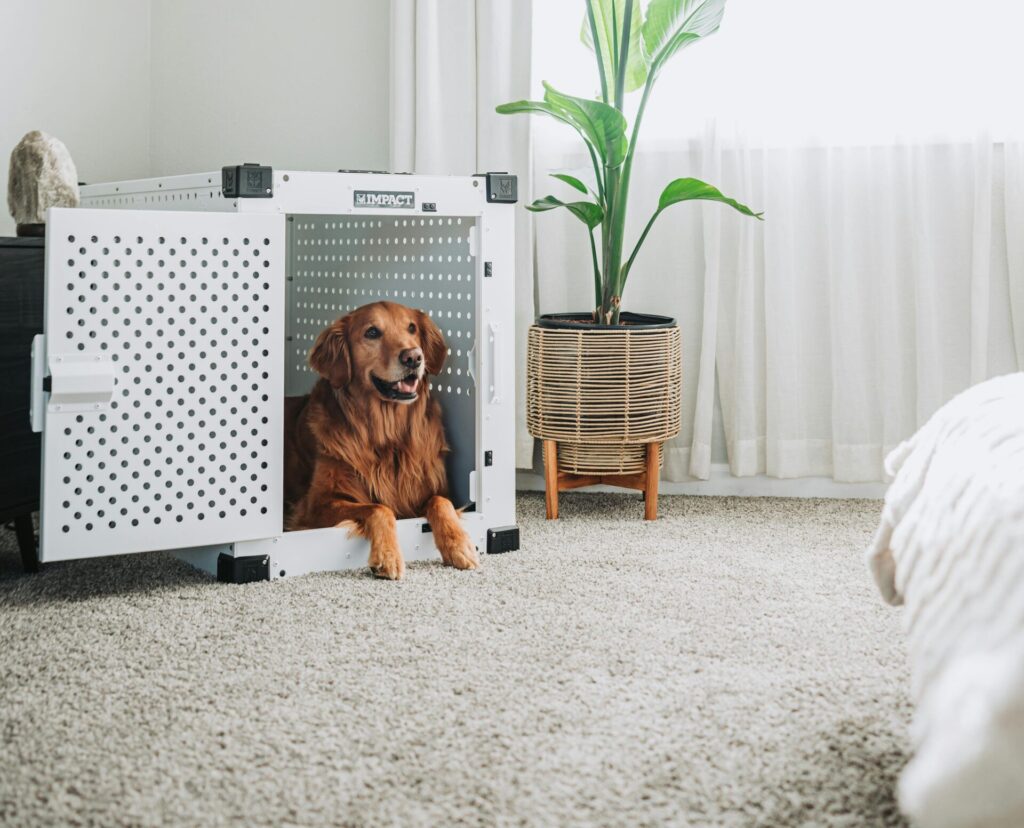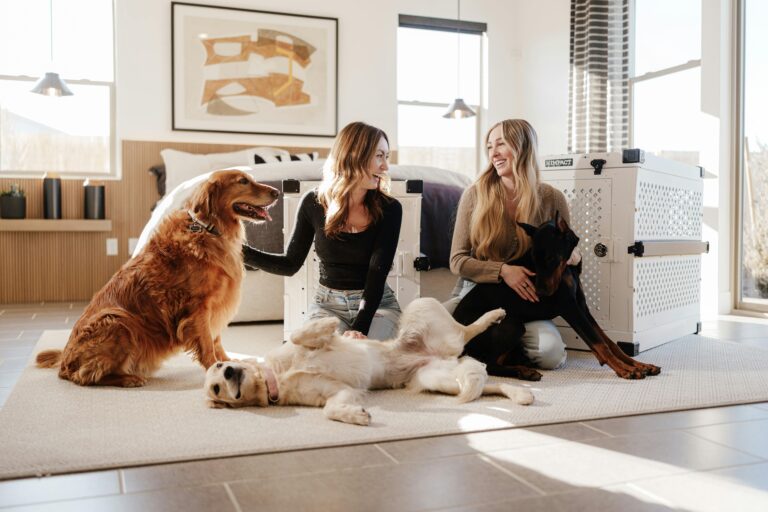For many new dog owners, the idea of crate training feels uncomfortable. “Isn’t it mean to lock my dog up?” is one of the most common questions we hear at Off Leash K9 Training Houston. The truth is, when done properly, crate training is one of the most valuable tools you can give your dog.
A crate is not a prison. It’s a safe space. It provides structure, helps prevent destructive behavior, and gives your dog a place to relax when life feels overwhelming. Let’s dive into why crate training is so important, how to do it the right way, and how it can set your dog up for success at every stage of life.

Why Crates Are Not Punishment
Dogs are den animals by nature. In the wild, they seek out small, enclosed spaces for rest and protection. A crate mimics this instinct and offers them comfort, not confinement.
Benefits of crate training include:
- Safety: Prevents chewing hazards, accidents, or ingestion of harmful objects.
- Housebreaking: Dogs naturally avoid soiling where they sleep, making crate training an effective potty-training tool.
- Routine: Builds predictability into your dog’s day, reducing stress.
- Travel: Prepares dogs for stress-free car rides, hotel stays, or vet visits.
- Alone time confidence: Teaches independence and prevents separation anxiety.
Crates, when used positively, become a safe haven your dog chooses to rest in, not a place they fear.
How to Introduce the Crate the Right Way
The key to success is creating positive associations.
Step-by-step introduction:
- Start with the door open: Place the crate in a quiet area of the home. Encourage your dog to explore it freely.
- Use treats and toys: Toss in high-value treats or a favorite chew toy to make the crate inviting.
- Feed meals inside: Place their food bowl just inside the crate at first, then move it all the way in over time.
- Short sessions: Begin with just a few minutes inside while you’re nearby, gradually increasing duration.
- Never use the crate for punishment: Your dog should never associate it with scolding or negative experiences.
Done correctly, most dogs will begin to enter the crate willingly when they want rest or quiet.
The Role of Structure in Crate Training
Crate training works best when it’s part of a consistent daily routine. For example:
- Morning potty break → Breakfast in the crate → Short nap
- Midday play → Calm crate rest
- Evening walk → Dinner in the crate → Family time outside of crate
Our post on why marker words matter in dog training explains how clear communication helps reinforce good behavior in every setting, including crate time.
Common Mistakes to Avoid
While crate training is straightforward, there are a few pitfalls to watch out for:
- Leaving the dog in the crate for too long without breaks
- Using the crate only when leaving the house (this can create negative associations)
- Skipping exercise, which leads to pent-up energy inside the crate
- Buying the wrong size crate (it should be large enough for your dog to stand, turn, and lie down comfortably)
Avoiding these mistakes ensures your dog views the crate as a positive, balanced part of life.
How Crate Training Reinforces Obedience
A crate-trained dog is calmer, more predictable, and easier to train. The crate provides built-in boundaries that support impulse control and reduce stress, especially in busy households.
This is one reason our Basic Obedience Program pairs crate work with structured commands like place, sit, and down. By combining obedience with crate confidence, dogs learn to settle no matter what’s going on around them.
Travel, Boarding, and Beyond
Life is full of situations where a crate-trained dog has a clear advantage:
- Vet visits or hospital stays: Your dog will be calmer and less stressed.
- Boarding or daycare: Dogs with crate experience adjust more easily.
- Road trips and flights: Crates keep dogs safe and secure while traveling.
For additional guidance, this PetMD article on crate training puppies provides great insight into building positive crate habits from the start.
Building a Foundation for Life
Far from being cruel, crate training is one of the most loving things you can do for your dog. It provides safety, security, and peace of mind for both of you. When introduced properly, it becomes a lifelong tool that helps your dog feel confident and calm in any situation.
Want to make crate training stress-free and effective?
Our trainers can guide you step by step, ensuring your dog learns to love their crate while building better obedience at home. Contact us today to get started.

